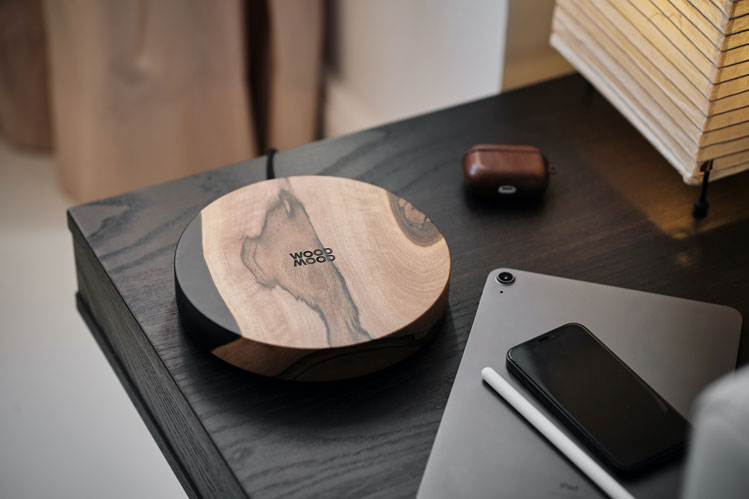Introduction
AirPods have become more than just a pair of wireless earbuds; they’ve become an integral part of my daily life. These sleek, white earbuds from Apple have not only revolutionized the way we listen to music but also how we interact with our digital world. Whether you’re a long-time AirPods owner or just unboxing a new pair, knowing how to connect AirPods is an essential skill to harness their full potential.
The journey with my AirPods started with the crisp sound quality and seamless connectivity they promised. Their tiny, unassuming form factor quickly became my constant companion, whether I was commuting to work, sweating it out at the gym, or just taking a leisurely stroll in the park. But beneath their simplicity lies a world of possibilities, and that’s what I want to explore with you today.
Why Knowing How to Connect AirPods Matters
So, you might be wondering, why is it so crucial to know how to connect AirPods? The answer is simple: AirPods are designed to work effortlessly with a range of Apple devices, but their compatibility doesn’t stop there. They can also be paired with a variety of non-Apple devices, from Android smartphones to Windows laptops.
This connectivity versatility is what makes AirPods stand out in the crowded world of wireless earbuds. Whether you’re an iPhone enthusiast or an Android devotee, the ability to connect AirPods seamlessly to your device opens up a world of convenience. It’s not just about music; it’s about hands-free phone calls, easy access to your virtual assistant, and a premium audio experience that adapts to your needs.
How to Connect AirPods to Apple Devices
Ah, the moment we’ve all been waiting for – getting your AirPods to dance in perfect harmony with your Apple device. Whether you’ve just unboxed your AirPods or are looking to reconnect them, this step-by-step guide will help you make the magic happen.
Step 1: Make Sure Your Apple Device Is Ready
Before we dive into the connection process, ensure your Apple device is up and running. Whether it’s your iPhone, iPad, or even your Mac, having a functioning device is the first step. It’s worth checking if your device’s Bluetooth is enabled. Don’t worry; we’ll walk you through it.
Step 2: Open the AirPods Case
Next, grab your AirPods case. It’s like a treasure chest, but instead of gold, it’s filled with auditory gems. Open the lid; this action activates your AirPods and puts them in pairing mode. A little LED light on the case will blink, indicating that they’re ready to be paired.
Step 3: On Your Apple Device, Navigate to Bluetooth Settings
Now, let’s head to your Apple device. Unlock it and swipe down the Control Center (for iPhones and iPads) or click the Bluetooth icon (for Macs). You’ll see a list of available devices. In this list, you should find your AirPods listed as “AirPods” or “Your Name’s AirPods.”
Step 4: Tap to Connect*
This is the moment of truth. Tap on your AirPods’ name in the list, and watch the magic unfold. Your Apple device will establish a connection with your AirPods. It might take a few seconds, but when it’s done, you’ll hear a satisfying chime, and your AirPods are officially paired.
Step 5: Confirm the Connection*
Your AirPods are now connected, but let’s confirm it. Play some music or a podcast and check if the audio is coming through your AirPods. You can also activate Siri by double-tapping your AirPods to ensure they’re fully integrated with your Apple ecosystem.
And there you have it – your AirPods are now seamlessly connected to your Apple device, ready to bring your favorite tunes and Siri’s assistance to your fingertips.
Troubleshooting Tips for Common Connection Issues
Of course, in the world of technology, things don’t always go as smoothly as we’d like. Here are a few common issues you might encounter when connecting AirPods to Apple devices and how to troubleshoot them:
Issue 1: AirPods Aren’t Showing Up in the Bluetooth List
- Solution: Make sure your AirPods are in pairing mode (blinking LED) and that Bluetooth is enabled on your device. You might need to close and reopen the lid of the AirPods case.
Issue 2: AirPods Aren’t Connecting
- Solution: Sometimes, a quick reset can do wonders. To reset your AirPods, press and hold the setup button on the back of the AirPods case until the status light flashes amber, then white.
Issue 3: Only One AirPod Is Working
- Solution: This can happen when one AirPod isn’t paired correctly. Put both AirPods back in the case, close the lid, and wait a few seconds. Then, open the lid and press and hold the setup button until the status light flashes white. This will reset the pairing.
Now that your AirPods are successfully connected to your Apple device and you’re armed with troubleshooting tips, you’re ready to enjoy a world of wireless audio convenience.
In the next section, we’ll explore how to connect your AirPods to non-Apple devices, extending the versatility of your earbuds beyond the Apple ecosystem.
How to Connect AirPods to Non-Apple Devices
So, you’ve conquered the world of Apple connectivity, but what if you’re not an Apple enthusiast and you’re wondering, “Can I use AirPods with my Android smartphone or Windows laptop?” The answer is a resounding yes! AirPods’ compatibility extends beyond the Apple ecosystem. Here’s how to connect your AirPods to non-Apple devices:
Step 1: Prepare Your Non-Apple Device
First, ensure your non-Apple device is powered up and Bluetooth is activated. The process may vary slightly depending on your specific device, but the general concept remains the same.
Step 2: Open the AirPods Case in Pairing Mode
Just like when connecting to Apple devices, open the lid of your AirPods case. The LED light on the case will start blinking, indicating that they’re in pairing mode. Your AirPods are now broadcasting their availability.
Step 3: Access Bluetooth Settings on Your Non-Apple Device*
On your non-Apple device, navigate to the Bluetooth settings. You may find this option in the settings menu or notification bar. Look for the available devices, and you should see “AirPods” or a similar name in the list.
Step 4: Tap to Connect*
Tap on your AirPods’ name, and the pairing process will begin. It might take a moment, but once the connection is established, you’ll hear that familiar chime, and your AirPods are now successfully paired with your non-Apple device.
Step 5: Test the Connection*
To ensure that everything is working as expected, play some music or a video on your non-Apple device. You should hear the audio coming through your AirPods. Try double-tapping your AirPods to activate your virtual assistant, too – it should work seamlessly.
Limitations and Considerations
While AirPods do work with non-Apple devices, there are some limitations to keep in mind. For example, you won’t have the same level of Siri integration or easy iCloud device switching as you would with an Apple device. Additionally, some advanced features, like automatic ear detection and seamless device switching, may not be available on non-Apple platforms.
However, AirPods can still provide excellent sound quality and a convenient wireless experience on Android, Windows, and other non-Apple devices. You’ll appreciate the ability to take hands-free calls, enjoy music, and access voice assistants on these platforms.
Now that you’ve successfully connected your AirPods to both Apple and non-Apple devices, you have the best of both worlds – seamless integration within the Apple ecosystem and the flexibility to use them with a wide range of devices.
In the next section, we’ll explore troubleshooting tips and provide maintenance advice to ensure your AirPods stay in tip-top shape.
Troubleshooting and Tips
No technology is flawless, and even the most advanced gadgets like AirPods can run into issues from time to time. But fear not; we’re here to help you troubleshoot common problems and provide some valuable tips for maintaining your AirPods.
Common Problems and Solutions
- Connection Issues:
- If your AirPods are not connecting to your device, make sure they are in pairing mode (blinking LED) and that Bluetooth is enabled on your device. Reopen the AirPods case to reset them if needed.
- One AirPod Not Working:
- Sometimes, one AirPod may not pair correctly. Put both AirPods back in the case, close the lid, and wait a few seconds. Then, open the lid and press and hold the setup button until the status light flashes white to reset the pairing.
- Low Volume or No Sound:
- Ensure that your AirPods are clean, and there’s no debris blocking the sound. You can also adjust the volume on your device and make sure the audio output is set to AirPods.
- Intermittent Disconnects:
- If you experience frequent disconnects, try resetting your AirPods. Go to your device’s Bluetooth settings, forget the AirPods, and then reconnect them.
- Battery Drain Issues:
- If your AirPods are losing battery quickly, make sure to keep them in their case when not in use. Also, consider checking for software updates that may improve battery life.
Maintenance Tips
- Clean Your AirPods Regularly: Clean the ear tips and speaker grilles with a soft, lint-free cloth. Be gentle, as the grilles can be delicate.
- Keep Your Case Clean: Dust and debris can accumulate in the case. Regularly clean the case with a soft brush or a lint-free cloth.
- Update Your Firmware: Periodically check for firmware updates through your connected Apple device. Updates may include performance improvements and bug fixes.
- Use the Right Accessories: If you need to replace your ear tips or case, make sure to use Apple-approved accessories for the best fit and performance.
By following these troubleshooting tips and maintenance suggestions, you can keep your AirPods performing at their best and address common issues that may arise.
In the next section, we’ll conclude our journey through the world of AirPods, summarizing the key takeaways and encouraging readers to explore the possibilities these wireless wonders offer.
Conclusion
Our journey through the realm of AirPods has shown just how versatile and powerful these wireless earbuds can be. Whether you’re a loyal Apple user or someone who prefers non-Apple devices, AirPods offer a seamless audio experience that adapts to your preferences. Here are the key takeaways:
- Apple Connectivity: Connecting your AirPods to Apple devices is a breeze. Enjoy the benefits of Siri integration, seamless device switching, and effortless pairing with a wide range of Apple products.
- Non-Apple Compatibility: Don’t let your choice of device limit you. AirPods can also be paired with Android smartphones, Windows laptops, and other non-Apple platforms, providing excellent sound quality and convenient hands-free features.
- Troubleshooting and Maintenance: Common issues, such as connection problems or low volume, can often be resolved with a few simple steps. Regular maintenance, like cleaning your AirPods and case, ensures they remain in top condition.
- Firmware Updates: Keep your AirPods up to date with firmware updates. These updates can bring performance improvements and bug fixes, enhancing your overall experience.
- Endless Possibilities: AirPods offer more than just music. With voice assistants, phone call capabilities, and a world of audio content at your fingertips, they become your personal audio companions.
.jpg)





